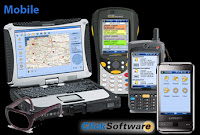In part 1 of this series I focused on the topics of sales channel development and marketing for mobile application vendors. In part 2 I will focus on sales and sales strategies.
- Organize all of your custom mobile application development projects into categories and business processes so the finished mobile applications can be demonstrated and used to show prospects your expertise. When I was CEO of a mobile application company, we took inventory of all of our code and mobile applications and found we had dozens and dozens of different mobile applications that we had delivered to customers but had never leveraged with other prospects. There were a lot of very cool apps on our shelves.
- Recognize that each custom mobile application may have many different features. Individual features may be of interest to different prospects. It would be good to catalog specific features so you can demonstrate them quickly.
- Use sales teams to find opportunities and qualify them, but close them with senior managers or executives. You will save weeks or months in the sales process.
- Once a qualified mobile opportunity is found, and the requirements are known, get your writers to write whitepapers specifically on the issues your prospects have. Detail the issues and solutions available in a formal publicly available whitepaper. The written word is very powerful and provides good documentation of your expertise. The same can be done with webinars, videos or podcasts. Be a thought leader.
- Become experts in your field. Don't permit your sales people to learn only 5 percent of their product or the industry they are targeting. They don't deserve your prospects' time if they are not solution experts. If it is not possible for your sales people to be experts, then make sure you bring experts to your customer meetings. Time is precious and you need to trade time for knowledge.
- Use a mobile application development tool (SDK - software development kit) to quickly provide screen shots and working proof of concepts for your prospects. A picture or image is very powerful in helping your prospects envision a solution. I have been very successful with this strategy over the years. I would go to prospective customer meetings, gather requirements, and then have my team brand (put the client's logo on it) a mobile application that showed all of the screens and fields they would need and included screen navigation. The sales prospects were very impressed and jumped straight into a deep dive discussion on how we could complete the application for them.
 In interviews with companies like SAP Mobility partner Clicksoftware, I learned that many vendors use a template approach so they can quickly demonstrate mobile applications that are similar to the needs of their prospects and customers. This is also a very effective approach.
In interviews with companies like SAP Mobility partner Clicksoftware, I learned that many vendors use a template approach so they can quickly demonstrate mobile applications that are similar to the needs of their prospects and customers. This is also a very effective approach.Look for part 3 in this series later this week.
Contact me if you would like to discuss these in more detail.
***************************************************
Kevin Benedict, SAP Mentor, SAP Top Contributor, Mobile and M2M Industry Analyst
Phone +1 208-991-4410
Follow me on Twitter @krbenedict
Join SAP Enterprise Mobility on Linkedin:
http://www.linkedin.com/groups?about=&gid=2823585&trk=anet_ug_grppro
Full Disclosure: I am an independent mobility consultant, mobility analyst, writer and Web 2.0 marketing professional. I work with and have worked with many of the companies mentioned in my articles.


No comments:
Post a Comment